How to Keep a Garage-Shop Toasty Warm
Readers weigh pros and cons of heating methods in this helpful dicussion from the Forum.
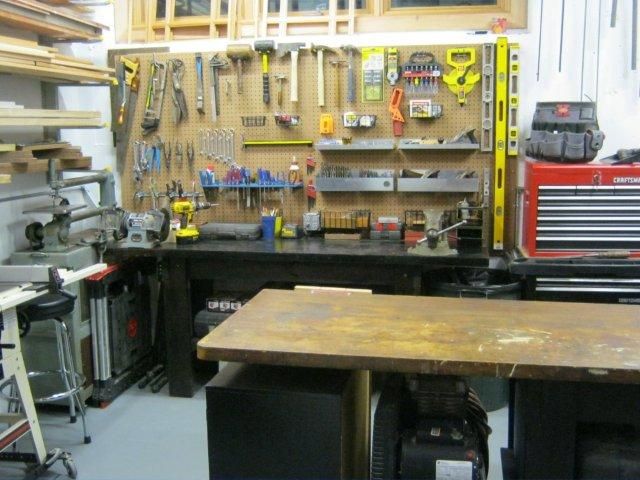
Strawmyers’ new garage will do double duty — providing not only parking for two vehicles but a small shop space as well. The 26-ft. by 36-ft. structure, attached to his house and located in Indiana, will be one big space, built with 2×6 walls insulated to R-19 and 14 in. of cellulose in the ceiling. It sounds like he has the bulk of the project figured out, but he’s still wrestling with the details of how to insulate the concrete slab and now to keep the space warm.
“My original intent was just the ‘standard’ for this area of 2 in. (R-10) of rigid foam under the slab with 2 in. around the perimeter for a thermal break,” Strawmyers writes in a post at Fine Homebuilding’s Breaktime forum. “Had considered 3-in. (R-15) under the slab so it would be closer to the R-value of the rest of the structure; but that size would have to be special-ordered and wound end up being an additional $600 over the 2 in. For this type of application, do you think R-15 vs R-10 would make a ‘felt’ difference that merits the upfront investment?”
It’s no minor quibble, because Strawmyers knows all too well what it’s like working in an ice-cold shop in the dead of winter. “My ambition comes from spending way too many nights in my parents’ unheated, uninsulated pole barn in the middle of winter working on some unexpected vehicle problem, etc. and being just miserable the entire time,” he writes. “The goal when I get this thing built is to move all of my tools over to my place and have a tolerable working space regardless of the weather.”
Strawmyers’ project is the topic for this Breaktime Spotlight.
Is insulation beneath the slab a waste of money?
No chance the extra insulation will be worth $600, writes Rdesigns, neither from the standpoint of payback nor comfort. “Any difference in comfort would be virtually undetectable,” he says.
Insulating walls and insulating a concrete slab are fundamentally different, Rdesigns says, because the heat transfer rates are so different.
“R-10 meets or exceeds the current requirements of the Energy Conservation Code,” Rdesigns adds. “[By the way], in the coldest climate zones, the energy code requires either perimeter vertical insulation to a depth of 48 in., or perimeter horizontal insulation 48 in. wide, but not both.
“Insulating under the entire slab would be an impractical expensive, if that’s what you mean.”
But under-slab insulation is exactly what Strawmyers means.
After pouring the footings and stem walls, Strawmyers intends to add strips of 2-in. thick rigid insulation along the inside of the foundation walls as a thermal break. After placing a vapor barrier and pea gravel in the area of the slab, he would add 2 in. of rigid foam before pouring a wire-reinforced slab 6 in. thick.
“Would you still not recommend insulation under the slab if the actual slab [were] heated (radiant)?” he asks.
Perimeter insulation, vertical or horizontal, acts as a barrier to heat transfer, RDesigns says, but additional insulation under the slab isn’t needed because soil is a good insulator, provided it’s thick enough.
“Nearly all of Indiana is in Climate Zone 5, which means that if you use vertical perimeter insulation only, you need to extend it down at least 2 feet below grade,” he writes. “Admittedly, more insulation and full under-slab insulation will provide additional energy savings, but nowhere near enough to pay you back in your lifetime, even if you heated the place continuously.
“For the intended use of your shop (intermittent), I can’t see the value of installing radiant slab heat, luxuriously comfortable though it certainly is.”
No, a radiant-heat slab is just what you want
It may be a waste of money to Rdesigns, but not to Calvin.
“I don’t want to tell you what to do,” he writes, “but will be happy to suggest blowing your money on a radiant slab. Seems every time I have shop work it’s 10 degrees outside. That means pulling out the propane heater and putting up with the fumes and the still cold concrete. About tomorrow, the room is warm enough to be comfortable.
“If I’d have done it right, like we did in the house, I’d have a happy wife with a warm car and a shop that was comfortable [before] I needed it.”
Stawmyers had considered radiant-floor heat, using a residential water heater as the heat source. But he’s concerned that the slab would take a long time to get warm, much longer than if he mounted a propane heater on the ceiling directly over the shop portion of the garage.
“If the slab is heated all of the time, scares me to think what my added electric costs would be to run the dedicated residential water heater during the winter months,” he says. Plus, he has plans to add a vehicle lift in the garage at some point in the future and worries he might puncture the PEX floor tubing when drilling the floor for anchor bolts.
Strawmyers is right on one count, says MarkH, and that’s the length of time it takes to get the concrete slab warmed up, so sporadic heating may be a problem.
“I would keep some heat going all the time if you use the shop a fair bit,” MarkH says. “I haven’t heard many complaints about heated slabs at all.”
On the question of whether insulation under the slab will help or hinder, MarkH says this: “My unscientific thinking is adding more insulation under the slab may make it colder. This is because the ground temperature can be warmer than the ambient air temperature. Adding a lot of insulation under the slab is useless, because heat rises, and the ground temp is generally closer to room temp than outside air in winter. Even if the slab was heated, R-10 or less would suffice for insulation.”
Other options for heat
PaulCP’s advice is not to heat the slab with hot water but opt for an electric radiant system instead, with the grid placed near the top of the slab and tile used as a finish layer.
“Keep the heating wires as close to the top as possible,” he writes. “Set the wiring up on a simple timer so you hit the switch and come back in an hour and the floor will be warm. That combined with an air heater will make your shop very pleasant to work in ON DEMAND.
“Cheap to install and run, too.”
Count Perry 525 as another vote against a radiant slab. Not only does it take “forever” to warm up a concrete floor, he says, but in order to run a radiant floor system economically it would take at least 4 in. of closed cell foam below and around the perimeter of the slab.
“A better way to heat your work shop is radiant quartz short wave heating,” Perry 525 says. “The joy of quartz heating is it’s like the sun! Switch it on and the heat is there instantly, switch it off and its cold. It only heats the space you are working in, move away and the area is cold. It’s cheap to run.”
There’s an idea that DanH likes. He points out that electric radiant heat is “essentially instant and it keeps you warm enough to work comfortably.
“The downside (beyond operating cost),” he adds, “is that the heat is uneven — one side of you is warm and the other cold.”
Or, try a frost-protected shallow footing
Another approach altogether is a frost-protected shallow footing, says Andy Engel.
“Essentially, extending the foam under the footers and out a few feet from the building saves the concrete and excavation of a frost footing,” he says, and that’s the approad he used in building his own garage.
By controlling groundwater and trapping latent heat in the ground prevents the ground below the footings from heaving in cold weather, Engel says. “In my case, I had to insulate the ground 4 ft. out from the building. Piece of cake. The building has been through three winters and there are no apparent issues. And as my original post mentioned, it’s an engineered design put out by the American Society of Civil Engineers. The insulation details depend on the climate zone.”
Fine Homebuilding Recommended Products
Fine Homebuilding receives a commission for items purchased through links on this site, including Amazon Associates and other affiliate advertising programs.

Affordable IR Camera

Handy Heat Gun

8067 All-Weather Flashing Tape
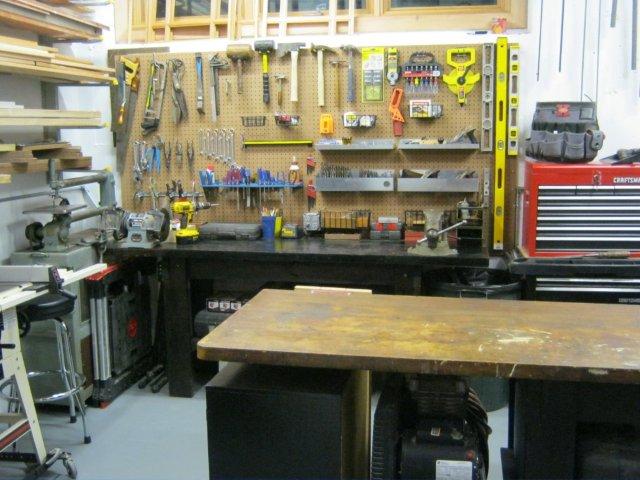
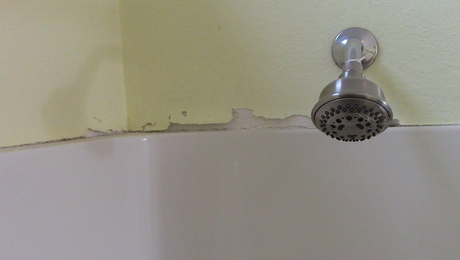


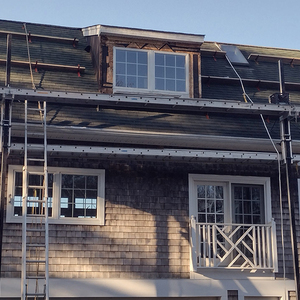
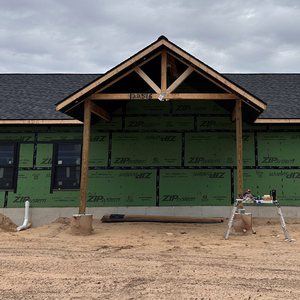


















View Comments
For intermittent use, thermal mass is the real killer. Just getting that slab up to temperature is going to take about 10,000 btu per degree F., and a deeper soil mass will take much more. It's great to have that mass if you keep a constant temperature (eg passive solar), but if you're going through cycles of heating it and then letting it cool fully the lighter mass will cost less.
Some kind of lightweight, insulative floor covering might be a good bet.
A warm floor isn't worth it? Where has this 'expert' been hiding?
Check any industrial establishment - heck, look behind the counter of the local 7-11. You'll find that where people stand, there are boards, or thick rubber mats, to warm the feet.
The reason is somewhat misleading. A 'cold' floor - and even 60 degrees is pretty cold - is uncomfortable to stand on for any period. Before you know it, your feet, legs, and even back hurt.
So, do you want a shop you'll work in, or a shop to look at?
Radiant heat in the slab? Maybe not such a silly idea. You'll have to do something about the chunks of ice and snow that fall from the cars.
I've worked in places with heat in the slab, and let me tell you- the response and warm-up are quite fast. Works real good for drying it, as well. No more slippery, wet floors.
Heck, it doesn't rain all that often. What's the payback to having a roof? Just do without.
my two cents for my garage shop (which will NEVER!!!! have a car in it) is rigid foam with OSB over it. Its fairly inexpensive, gives me a thermal break should be fairly comfortable and it's also semi-permanet. If you planned it out right, you could remove sections where you needed to to put a car in if you absolutely had to. Stupid cars......
I just did a very similar project in my basement/shop. I used a jack hammer to remove the entire basement slab, dug deeper and added 4-5 inches of gravel and 2 inches of r-10. I actually used crete heat which has knobs for clipping in pex(really easy) I am in a place that gets very humid(Ossining, NY) so the 2 inches of insulation I used under my radiant floors payed off handsomely, helping to prevent condensation when that hot summer air hits the slab. The insulation also speeds up the heating of the concrete floors, since you don't have to heat the ground. I would not and did not add 2 vapor barriers. Foam board is a vapor barrier if taped. In the case of crete heat it has these cool tongue and groove like edges that completely make a tight moisture barrier. I also use metal wire mesh above the pex to even out the heating. One more note about the 2 inch rigid. I did the perimeter nearly to the depth of the concrete to prevent heat being stolen out the sides. I have had this system in my shop for 2 years now. It does take a few hours to get warm but not bad at all. I keep the thermostat set at about 45-50F but It almost never turns on because the ground temp keeps things from freezing even with the insulation. I would fear over insulating would also hinder some of the summer benefits of a cool ground. Remember when designing radiant systems folks- heat does not rise! Hot air and water does. cheers, Jon
THE EXTERIOR PERIMETER INSULATION IS VERY IMPORTANT, AT LEAST 2" THICK RIGID FOAM DOWN OR OUT 4'. IN 1958 I STOPPED A BLOCK BUILDING'S CORNER HEAVING WITH JUST 1' BLACK HOMASOTE BURIED 6" DEEP AND GOING OUT 4'. THE RIGID FOAM IS MUCH BETTER.
MY SHOP IS AN UNDER THE HOUSE 24' SQUARE 2 CAR GARAGE. AFTER CONSIDERING THE OPTIONS I INSTALLED A SINGLE CEILING HUNG 45,000 BTU/H HOT WATER COIL, FED FROM THE HOUSE HYDRONIC SYSTEM. THERE ARE 2 THERMOSTATS, ONE SET AT 45 DEG. F, THE OTHER SET TO 69 DEG.F AND TIED TO THE LIGHT SWITCH. THE HEATER VANES DIRECT THE HOT AIR TO THE FLOOR, WHERE IT SPREADS OUT IN ALL DIRECTIONS.
ENTERING THE SHOP, I TURN ON THE LIGHT AND IN MOMENTS AM BATHED IN WARM AIR, RISING FROM THE FLOOR, VIRTUALLY NO DELAY.
EVEN IF ONLY IN THE SHOP FOR A MINUTE, I'M NEVER COLD.
My shop is insulated and is heated all the time geothermally.
The best thing I did for comfort is install both garage doors to R19. Makes the shop very comfortable in all wheather.
As KHWillets noted, if the concrete base is 4 inches thick, the pad will weigh 41,062 lbs.
It will take 8,212 Btu to raise the temperature 1 degree Fahrenheit.
If we take a typical day as 50F and raise the floor temp to 70F then we use
164,248 Btu or 48.0919 Kwh.
There will be some delay in the pad heating up.
Surely this is an unrealistic cost for a few minutes work?
From my experisnce no matter how you heat the garage you want some insulation under the slab and not just the perimeter. Even at 45-50 degrees the soil will remove much of your heat and the earth is a HUGE heat sink. Remember basic physics - heat does not just rise!!!!! With insulation under the slab it would take a little while to warm it but at least it would warm up some vs no insulation it will be a constant drain. Do any winter camping and I'm sure you would never sleep directly on the ground but use a insulating matt. Another exapmple -I had a wood stove in a basement with insulated walls and no insulationin under the slab. It was difficult to get the room temp much above 65. Once the slab was insulated the room temp was over 80 at times. All because my heat was going through the floor.
In the spring it would also decrese the condensation issues so often seen on cool concrete floors. I encourage you to check out Green Building Advisor it is actually a sister site to FHB so I'm surprised at the comments here. Can you have to much insulation for payback for sure, but 2" is not unreasonable. Here is an article on that issue http://www.greenbuildingadvisor.com/blogs/dept/musings/can-foam-insulation-be-too-thick
Good luck but my experience is it is well worth it even if you only spend short periods of time in the garage.
Radiant heat in the slab is by far the best system for user comfort. It allows comfort at a lower air temperature, (which saves energy)avoids the cold feet issue, keeps the floor dry, and keeps the room warm even when the overhead doors have to be opened up temporarily for moving cars/equipment.
Radiant heat does not respond quickly and a forced air supplemental heater might be worth having too. It all depends on how often the space will be used, if there is any advance notice that the space will be needed, and most importantly for how long of a duration will the space be used.
The forced air system could handle the entire load, at a lower cost, but also at a lower comfort level. Its possible to work in an unheated building, but once you want to move beyond that, it becomes a matter of degree. How comfortable do you want to be?
Underslab insulation becomes more important with radiant heat. (because the warmest part of the room will now be the floor and not the ceiling and heat loss to the soil increases).
In my opinion it would be a shame to build a new building today without at least R-10 under the entire slab,and I would look for R-20 if there was going to be radiant heat. I wonder what RDesigns thinks of Passive House standards for under slab insulation. It consistently seems to me that Fine Homebuilding trys to stir up resentment against higher performance building.
Realistically you only get one chance to insulate under the slab,and add radiant tubing. I think its a real mistake from a comfort stand point as well as an energy stand point to skip those steps now.(You could add the relatively inexpensive tubing in the slab now even you expect to use a forced air system initially). Do we expect energy costs to go down? The additional $600 is an incidental expense compared to the cost of the building.
Remember this building is going to be around for a long time and we should consider future uses. It use may change from being heated intermittently to being heated all the time. How silly would it seem to have skipped on the under slab insulation if in 20 years the building were going to be heated all winter long.
A related and more useful discussion might be to consider all the insulation levels in relation to each other. For instance making the ceiling R-300 would do little to reduce heat loss if the walls remained R-19 and the floor remained R-10. As we raise the thermal efficiency of our buildings we need to do so by thinking of all the building systems together. With stud wall/fiberglass the whole wall performance is probably R-12 and the walls will have a lot of air infiltration.The walls may be the weak link in the thermal envelope.
Radiant heat in the slab is by far the best system for user comfort. It allows comfort at a lower air temperature, (which saves energy)avoids the cold feet issue, keeps the floor dry, and keeps the room warm even when the overhead doors have to be opened up temporarily for moving cars/equipment.
Radiant heat does not respond quickly and a forced air supplemental heater might be worth having too. It all depends on how often the space will be used, if there is any advance notice that the space will be needed, and most importantly for how long of a duration will the space be used.
The forced air system could handle the entire load, at a lower cost, but also at a lower comfort level. Its possible to work in an unheated building, but once you want to move beyond that, it becomes a matter of degree. How comfortable do you want to be?
Underslab insulation becomes more important with radiant heat. (because the warmest part of the room will now be the floor and not the ceiling and heat loss to the soil increases).
In my opinion it would be a shame to build a new building today without at least R-10 under the entire slab,and I would look for R-20 if there was going to be radiant heat. I wonder what RDesigns thinks of Passive House standards for under slab insulation. It consistently seems to me that Fine Homebuilding trys to stir up resentment against higher performance building.
Realistically you only get one chance to insulate under the slab,and add radiant tubing. I think its a real mistake from a comfort stand point as well as an energy stand point to skip those steps now.(You could add the relatively inexpensive tubing in the slab now even you expect to use a forced air system initially). Do we expect energy costs to go down? The additional $600 is an incidental expense compared to the cost of the building.
Remember this building is going to be around for a long time and we should consider future uses. It use may change from being heated intermittently to being heated all the time. How silly would it seem to have skipped on the under slab insulation if in 20 years the building were going to be heated all winter long.
A related and more useful discussion might be to consider all the insulation levels in relation to each other. For instance making the ceiling R-300 would do little to reduce heat loss if the walls remained R-19 and the floor remained R-10. As we raise the thermal efficiency of our buildings we need to do so by thinking of all the building systems together. With stud wall/fiberglass the whole wall performance is probably R-12 and the walls will have a lot of air infiltration.The walls may be the weak link in the thermal envelope.
I totally agree with user -410093.
"In my opinion it would be a shame to build a new building today without at least R-10 under the entire slab,and I would look for R-20 if there was going to be radiant heat. I wonder what RDesigns thinks of Passive House standards for under slab insulation. It consistently seems to me that Fine Homebuilding trys to stir up resentment against higher performance building".
Do a little research if you need to convince yourself. I think being a online FHB member gives you some access to greenbuildingadvisor.com
check it. It is a great resource dealing with issues just like this. I'm kinda surprised that the author didn't use this source since FHB is uing them more for articles and advice.
I would like to suggest the statement that heat rises is incorrect. Hot AIR rises, radiant heat energy, well radiates in all directions.
i am building a 22 ft x 24 ft double garage I'll be using the right bay for my sewing refinishing shop that wall will have 3 windows and a door i upgraded my garage doors to better insulation I will have a staircase to upstairs storage and I would like to know what is the best way to insulate walls ceiling roof slab for some type of space heaters how much would slab heating cost? I would like a concrete answer before I start to build my detached garage. THank you Vicki